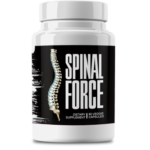This Village-Made Chinese Pain Reliever Eliminates Back And Joint Pain!
Preventing Shoulder Osteoarthritis: Lifestyle Changes That Help

Shoulder Osteoarthritis: Simple Lifestyle Tweaks to Keep Your Joints Happy
That nagging shoulder pain when you reach for a top shelf or swing a tennis racket? It might be more than just sore muscles. Shoulder osteoarthritis creeps up slowly, often unnoticed until it starts impacting daily life. But here's the hopeful part - with some smart habits, you can significantly lower your risk and keep your shoulders moving smoothly. Let's break down what causes it, how to spot early warning signs, and most importantly, practical ways to protect your joints before problems start.
Getting to Know Shoulder Osteoarthritis
What's Actually Happening in Your Joint?
Imagine the cartilage in your shoulder as nature's shock absorber. Over time, this cushion between bones can wear thin, leading to that painful bone-on-bone grinding we call osteoarthritis. It typically hits either the ball-and-socket joint (where your arm meets shoulder) or the smaller AC joint near your collarbone. Once cartilage breaks down, it's gone for good - which is why prevention is so crucial.
Why Your Shoulders Might Be at Risk
While birthdays play a role (our joints aren't getting any younger), other factors stack the deck:
- Old injuries: That college football dislocation or forgotten fall can come back to haunt you.
- Daily grind: Jobs or hobbies with constant overhead movement (looking at you, painters and swimmers).
- Family ties: If parents had joint issues, you might be predisposed.
- Extra pounds: More weight means more stress on joints and more inflammation.
Your Body's Early Warning System
Don't ignore these whispers before they become shouts:
- A deep ache that lingers after activity
- Morning stiffness that feels like your shoulder needs to "warm up"
- Crunchy sensations when moving your arm
- Suddenly struggling with simple tasks like braiding hair or grabbing a seatbelt
Why Playing Defense Matters Now
The Window of Opportunity
Here's the truth: cartilage damage doesn't heal. But catching changes early means you can slow the progression dramatically. Think of it like maintaining a car - regular oil changes prevent engine failure down the road.
What Happens If You Ignore It
Left unchecked, osteoarthritis can lead to:
- Pain that interrupts sleep and simple pleasures like hugging grandkids
- Muscles wasting away from lack of use
- Bone spurs creating more damage
- Eventually facing joint replacement surgery
Your Shoulder-Saving Game Plan
Weight Management: Less Load, More Mobility
Here's some math that matters: every pound you carry puts 4-5 pounds of pressure on joints. Dropping just 10-15 pounds can feel like removing a 50-pound backpack from your shoulders!
Move It to Protect It
Contrary to instinct, movement is medicine. Low-impact activities like water aerobics or cycling keep joints lubricated while building supportive muscles. Aim for 30 minutes most days - your shoulders will thank you.
Work Smarter, Not Harder
If your job has you reaching up constantly, try these hacks: use a stable step stool to reduce overhead reaching, take micro-breaks every 20 minutes, and alternate which arm does the work.
Shoulder-Specific Exercises That Help
Building Your Natural Shoulder Brace
- Band pull-aparts: Great for posture - think of squeezing a pencil between your shoulder blades.
- Modified push-ups: Start against a wall or counter to reduce strain.
Keeping Things Loose
- Cross-body stretch: Like giving yourself a gentle hug, hold for 30 seconds.
- Thread-the-needle: On all fours, reach one arm under your chest to open tight spaces.
Gym Modifications That Make Sense
Swap military presses for lateral raises that stop at shoulder height. Machines often provide better control than free weights for sensitive joints.
Eating for Joint Health
Nature's Anti-Inflammatories
- Wild-caught salmon (hello, omega-3s!)
- Golden milk with turmeric before bed
- Dark leafy greens - the crunchier, the better
Supplements Worth Considering
While not magic bullets, some people find relief with glucosamine, vitamin D3, or collagen peptides - just check with your doc first.
Water: Your Joints' Best Friend
Since cartilage is mostly water, dehydration literally dries out your joints. A good rule? Drink half your body weight in ounces daily (more if you're active).
Everyday Habits That Add Up
Posture Check!
Try this: gently tuck your chin like you're holding an orange under it. This simple move aligns your head over shoulders, taking pressure off joints.
Desk Job Survival Tips
- Elevate your monitor so you're looking straight ahead
- Use speakerphone or headphones to avoid the "phone shoulder crunch"
Sleeping Without Waking Up Sore
Side sleepers: hug a pillow to keep shoulders aligned. Back sleepers: try a thin pillow under your arm for support.
When to Call in the Pros
Red Flags Not to Ignore
- Pain that over-the-counter meds can't touch
- Discomfort that wakes you up at night
- Visible swelling or changes in joint shape
Professional Help Options
Physical therapists can work wonders with tailored exercises and treatments like ultrasound therapy. For advanced cases, doctors might suggest steroid injections or regenerative treatments.
Wrapping It Up
Your Shoulder Health Cheat Sheet
- Mix strength training with gentle stretching
- Load up on anti-inflammatory foods
- Modify activities before pain starts
Final Thought
While we can't turn back time for our joints, these strategies give you real power to influence how your shoulders age. Small, consistent changes today can mean staying active and pain-free for decades to come.
Have a favorite shoulder-friendly recipe or exercise? Drop it in the comments - let's learn from each other!








